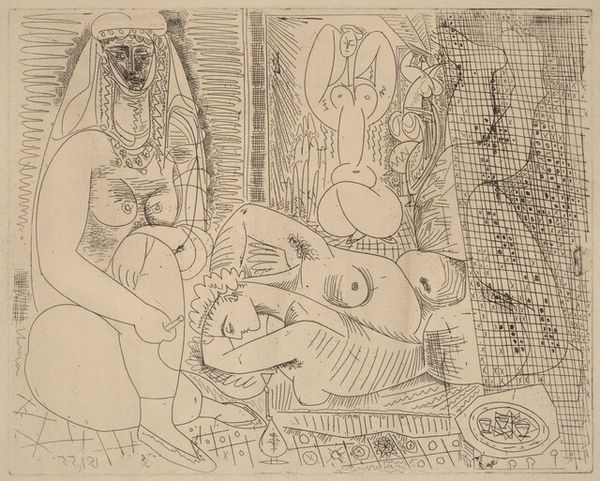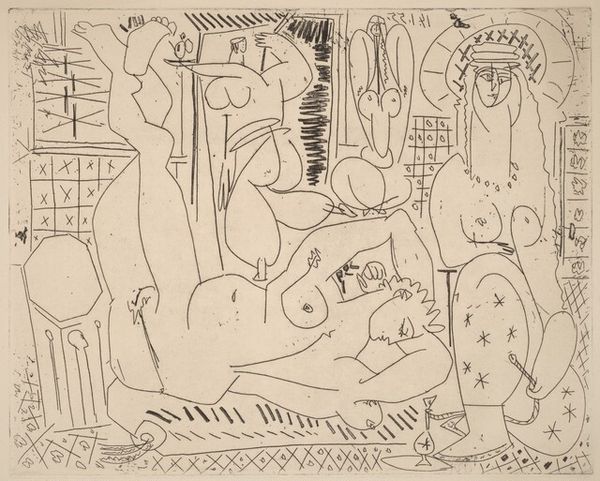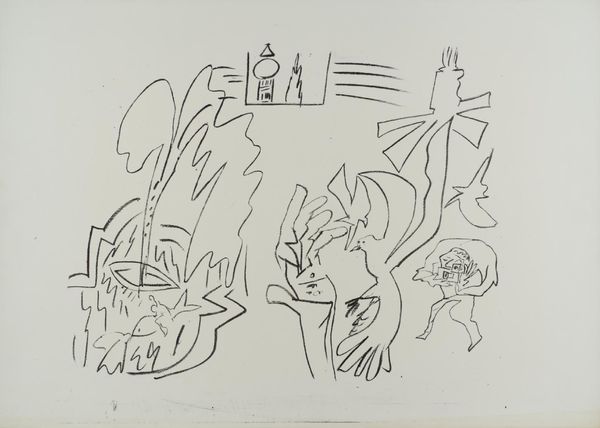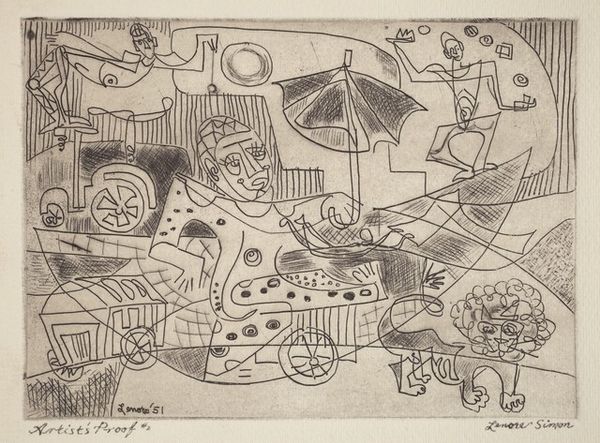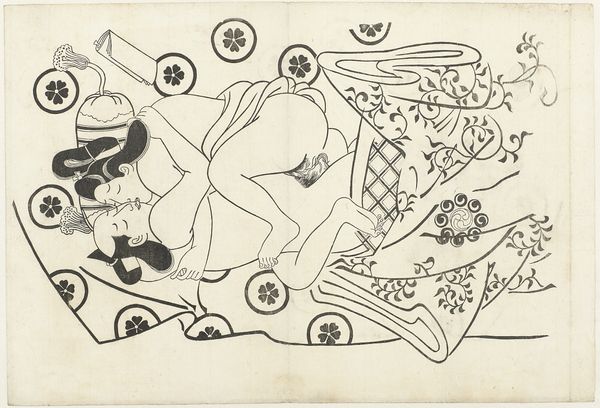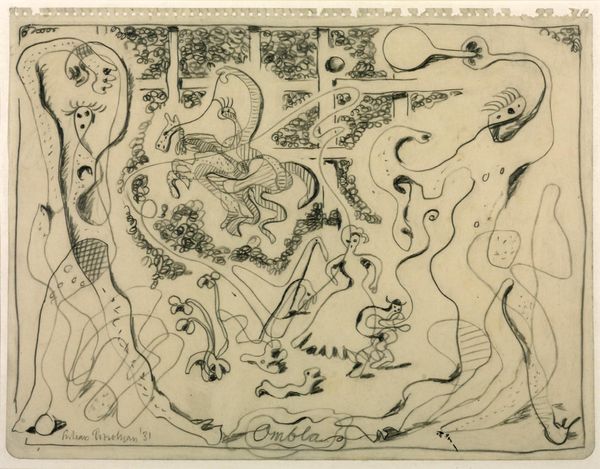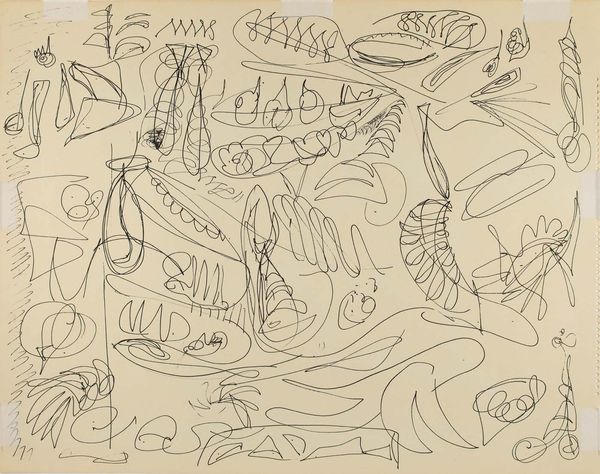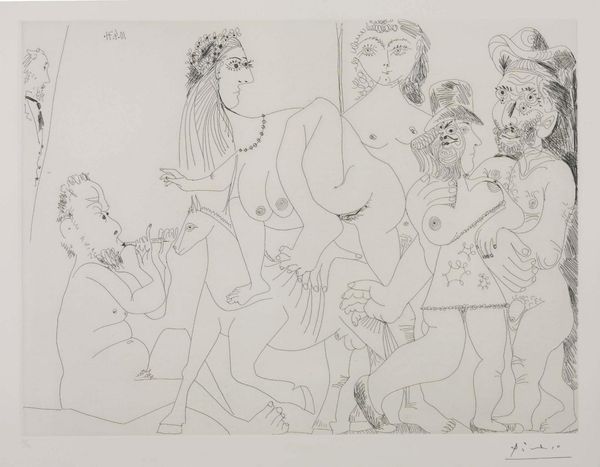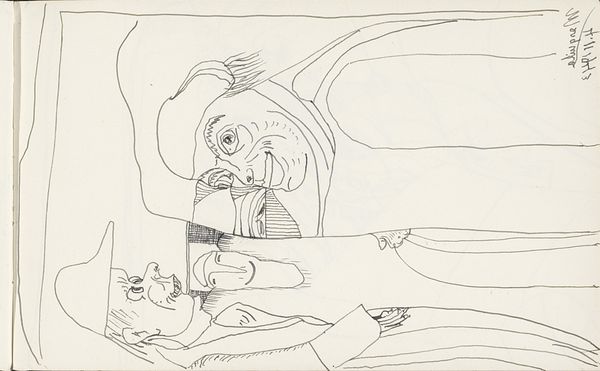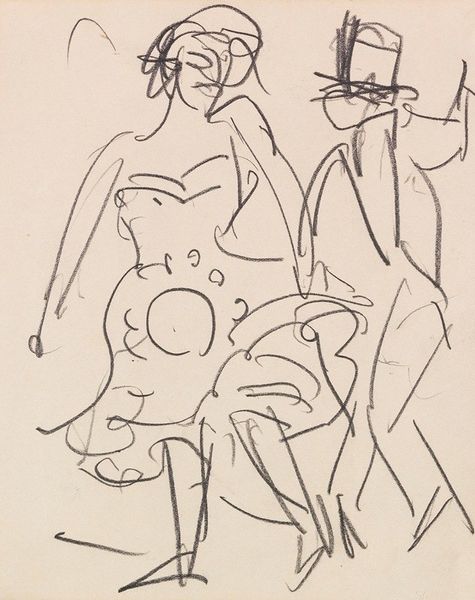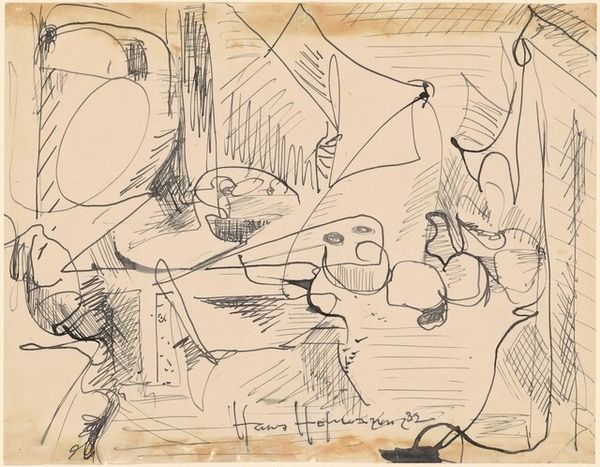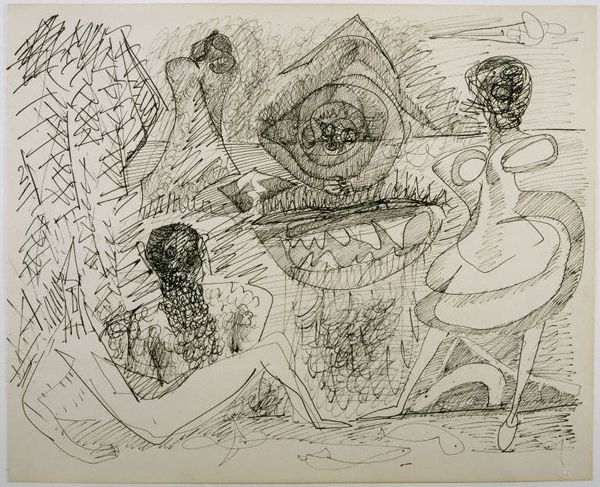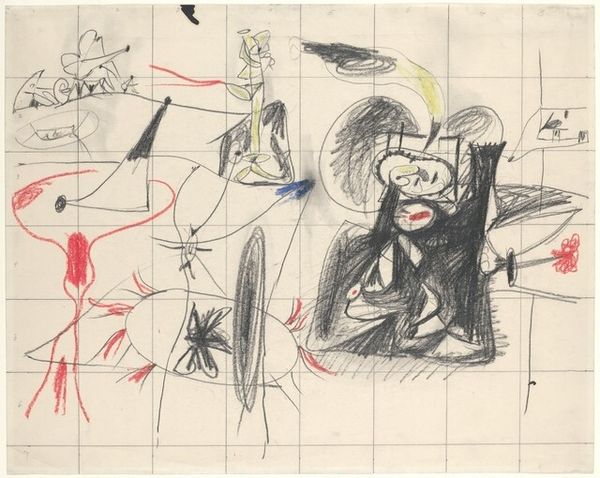
drawing, print, etching, ink
#
abstract-expressionism
#
drawing
# print
#
etching
#
figuration
#
ink line art
#
ink
#
orientalism
#
nude
#
modernism
Dimensions: plate: 23.7 x 29.9 cm (9 5/16 x 11 3/4 in.) sheet: 28.7 x 38.1 cm (11 5/16 x 15 in.)
Copyright: National Gallery of Art: CC0 1.0
Curator: Before us is Pablo Picasso’s "Variation on Delacroix's 'Women of Algiers': I", an etching and ink print from 1955. Editor: It looks unfinished, almost like a blueprint abandoned mid-construction. I’m immediately drawn to the density of the lines, a veritable thicket forming a rather uncomfortable tableau. Curator: Well, Delacroix’s original painting certainly had an undeniable aura of sensuality. Picasso filters that through a modern lens. He's stripping away the Romantic sheen, laying bare the underlying power dynamics and perhaps the male gaze itself. The linework here reflects anxiety rather than comfortable orientalism. Editor: You see anxiety, I see speed and a raw urgency in its making. It looks like he attacked the plate, quickly and deliberately. The focus on simple materials emphasizes this brutalist effect: just the etching plate, the acid, the ink. The subject becomes secondary to the forceful act of production. Curator: Interesting. Notice, though, how Picasso revisits and reinterprets familiar symbolic motifs - the odalisque, the veiled woman, domestic spaces - each carrying centuries of cultural baggage. These aren’t just materials arranged in space; they evoke layers of historical representation. What is visible, and who controls the viewing, seems central here. Editor: That might be overstating the case. Surely, we should consider Picasso's life at this point: the role of his new muse and soon-to-be-wife, Jacqueline Roque, displacing the shadow of the older Francoise Gilot, or the fact that his dealer just recently had passed away. Surely, his world would be affecting the raw intensity. Curator: Those relationships and contextual upheavals do inform his gaze, absolutely. He's dissecting Delacroix, yes, but he is also confronting the women within his immediate environment and the symbolic role of women in Western art itself. Editor: Perhaps this variation exists somewhere between an exercise in revisiting artistic precedent and the very grounded realities of the man in the moment. Curator: It’s that push and pull, I think, that makes it such a potent work—an excavation of history viewed through a fractured, subjective lens. Editor: Ultimately, seeing it here prompts questions about the physicality of artmaking, about artistic ego, and about the cultural implications of looking.
Comments
No comments
Be the first to comment and join the conversation on the ultimate creative platform.
